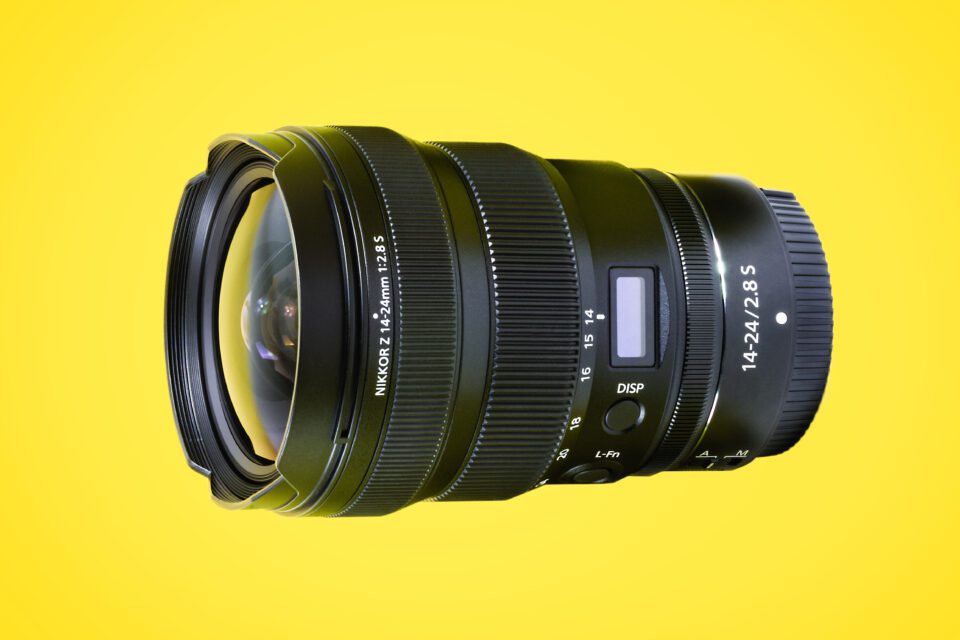An ultra-wide lens with a large maximum aperture – and also one of Nikon’s best lenses ever.
Nikon makes some some seriously good ultra-wide lenses. The F-mount 14-24mm f/2.8 is often considered one of the best wide zooms ever, and the wide-angle Z lenses we’ve seen so far have also been fantastic. But how does the Nikon Z 14-24mm f/2.8 S compare?
The short answer is that it’s one of the best lenses we’ve ever tested. Nikon has managed class-leading performance in almost every measure, while also bringing the lens’s weight down to a remarkable 650 grams (1.43 pounds). By comparison, the F-mount version weighs 1000 grams (2.20 pounds), which is more than 1.5 times as heavy.

While the Nikon Z 14-24mm f/2.8 S isn’t cheap at $2400 (with periodic sales bringing it to $2200), it’s not out of line for what similar lenses cost. The Canon RF 15-35mm f/2.8 is $2300, for example; the Sony 12-24mm f/2.8 is $2900-3000. Even the Nikon F-mount 14-24mm f/2.8 was a similar price when it was introduced: $1800 in 2007, which is $2330 in today’s dollars. Some third party-lenses are obviously cheaper, and you can always by used, but this isn’t a bad price for a name-brand f/2.8 ultra-wide zoom.
The Nikon Z 14-24mm f/2.8 has a reasonably complex design with 16 lens elements in 11 groups, of which three are aspherical and four use extra-low dispersion glass. It has Nikon’s high-end construction for a Z-series lens, with two control rings, a custom function button, and an EL display for things like distance and depth of field information.

At the same time, considering that Nikon already has a Z-series 14-30mm f/4 that’s lighter, less expensive, and has a longer zoom range, who is the 14-24mm f/2.8 meant for in the first place?
Part of the answer is that it has a wider maximum aperture of f/2.8. Astrophotographers and event photographers will salivate over capturing twice as much light compared to f/4, not to mention the better focusing capabilities in low-light conditions. Along with that, as you’ll see later in this review, the Nikon Z 14-24mm f/2.8’s optical characteristics are so good that they may sway plenty of photographers who trying to decide between it and the 14-30mm f/4 S. I’ll cover those optical characteristics in a moment, but first, let’s start by taking a look at the Nikon Z 14-24mm f/2.8’s full specifications:
Nikon Z 14-24mm f/2.8 S Specifications
- Mount Type: Nikon Z Mount
- Focal Length: 14mm to 24mm zoom (1.71× zoom)
- Angle of View (DX): 90° to 61°
- Angle of View (FX): 114° to 84°
- Maximum Aperture: f/2.8
- Minimum Aperture: f/22
- Aperture Blades: 9, rounded
- Filter Size: No built-in filter thread; HB-97 lens hood has a 112 mm filter thread; lens also has rear slot for gel filters
- Lens Elements: 16
- Lens Groups: 11
- Special Elements: 3 aspherical, 4 extra-low dispersion glass
- ARNEO Coating: Yes
- Nano Crystal Coating: Yes
- Super Integrated Coating: Yes
- Fluorine Coated Front Element: Yes
- Electronic Diaphragm: Yes
- Vibration Reduction: No
- Internal Focusing: Yes
- Control Rings: 2
- Function Button: Yes
- Internal Zooming: Partly; lens length never changes, but front element moves within stationary outer barrel
- Focus Motor: Stepping Motor
- Minimum Focus Distance: 28.0 cm (11.0 inches) at all focal lengths
- Maximum Magnification: 0.13× at 24mm (1:7.7 magnification)
- Mount Material: Metal
- Weather/Dust Sealing: Yes
- Dimensions (Length × Diameter): 88.5 × 124.5 mm (3.5 × 5.0 inches)
- Weight: 650 g (1.43 lbs)
- MSRP: $2400
- Lowest Sale Seen: $2200 (check current price)

Those are some very impressive specifications. Almost half the lens elements are some special kind, whether aspherical, ED glass, or the fluorine-coated front element. The Nikon Z 14-24mm f/2.8 is one of the few lenses of its type that is capable of taking filters – not just rear gel filters, but also 112 mm screw-in filters when you’re using the HB-97 lens hood.
Here’s the lens construction diagram that Nikon provides:

Note the extra space at the back of the lens; that’s where the rear gel filters go.
At least on paper, the Nikon Z 14-24mm f/2.8 looks like an excellent lens. But how does it perform in practice? As good as it is, there are a few things you need to be aware about if you want to make the most of this lens. The next page of this review covers everything you need to know, so click the menu below to jump to “Build Quality and Handling”: